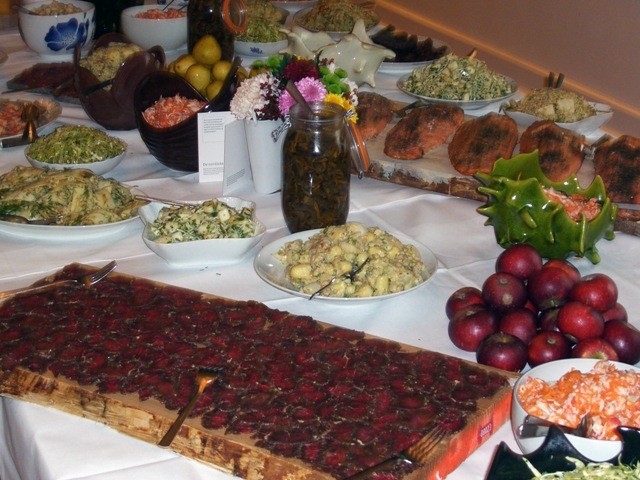|
As such, the idea is unlikely to find firm support, but it may make us think about the role of culture in achieving financial success, which today is largely equated with creativity. What restrictions or advantages does Estonian culture present us with in duplicating and impounding creative fields? In January 2010 Tallinn played host to the food culture conference 'Food For Future' and the Estonian round of the Bocuse d'Or competition. Those taking part were all big names on the culinary scene, and each had their fans. Putting the outstanding and comparatively culinary-specific approaches to the art of cuisine of Albert Adria and Fergus Henderson, I would instead like to look at some of the highlights of Claus Meyer's overall performance. One of the founders of Noma – which has once again won the title of Best Nordic Restaurant – and an indefatigable spokesman for Nordic cuisine, Claus Meyer painted a poignant picture of Danish culinary culture in the years of his youth. His rich, flowing description, pitted with irony, is best summarised by his assertion that there were only two important aspects to food at the time: it had to be cheap, and it had to be on the table within 30 minutes. This in turn necessitated preservation, which produced conserves, frozen food, ready-made products and more. And no less important: food was monopolised by major corporations. Small producers were soon squeezed out. Meyer set about overturning this attitude immediately. In 2004 ten of the leading chefs from the Nordic countries drafted the New Nordic Food manifest. Its ten writings are designed to improve people's quality of life through better-informed nutrition, more sustainable production and food education. This means the seasonal use of local flora and fauna; the freshness and ecological purity of raw materials; and showing a preference for local producers and cooperation in the fields of food education and research. And not just among a small circle of people with an interest in the topic – the aim is for these principles to take root in the everyday lives of all. The Nordic Council of Ministers started supporting the implementation and promotion of the manifest in 2006. Sustainable business networks which advocate and enable regional development and meet people's needs have already begun to spring up. Food as a field of the creative economy is not snobbery for art's sake. It is a form of dedication; a recognised appreciation of food and everything to do with it which truly enables people to achieve financial well-being. Eating is not merely a technical process of filling your stomach: it is an energetic process in which every link affects the whole chain. Good food is often accompanies by fine wine. In the Nordic countries, people just as often wash their food down with good stories. If you follow the manifest on Nordic food, every link in the food preparation chain has the potential to become a mouth-watering story of its own. Spanish cuisine made its global breakthrough less than 30 years ago. Now it is something to which a huge number of companies are dedicated and from which they are making enormous profits. What has Estonia got to lose – and indeed to win – from promoting culinary culture as a creative field? This opinion article by Madis Tilga was published in the Creative Estonia newletter in February 2010. |
You don’t play with your food?!
|
You have to wonder how this fundamental rule – which clearly dates back to the days of Erasmus in Rotterdam – has affected gastronomy. Looking at the phenomenon of Ferran and Albert Adria's art of cuisine, it is hard to resist the temptation to see the role of culture and religion in the free interpretation of this no-no. Could it actually be the case that a more liberal interpretation of the moral norm within Catholic cultural space has gifted the ElBull restaurant and the Adria brothers the advantage in remaining at the top of their game in the culinary arts for so long? They play with their food in the most literal sense of the word possible! |

 Who could ever forget the unwritten, if oft spoken, rule we all learnt as children at the dining table: "Don't play with your food!" And quite right, too, says Madis Tilga, an adviser with the Nordic Council of Ministers' Office in Estonia in this opinion article. At least in the sense of careless or malicious handling.
Who could ever forget the unwritten, if oft spoken, rule we all learnt as children at the dining table: "Don't play with your food!" And quite right, too, says Madis Tilga, an adviser with the Nordic Council of Ministers' Office in Estonia in this opinion article. At least in the sense of careless or malicious handling.